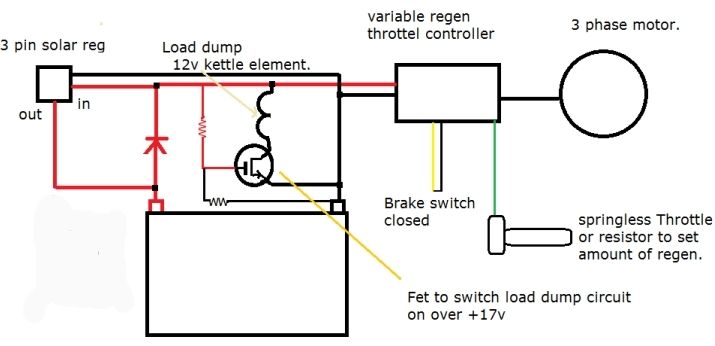
Might work, as is depending on the solar regulators blocking and switching functions.,
Set your resistors to operated the fet to switch on at 17v. The point of the fet and the dumpload is when the solar charger disengages the regen voltage will ramp to exeed the limits of the input of the solar regulator. There will be spikes and it will continue to create resistance on the motor well after the battery is full.
The kettle element, they are usually rated at anout 200 watts, which should proved the pedeler ample resistance for exercise.
The diode blocks Power out of the controller to the battery and channles current through the solar regulator. The regen is enough to keep the controller powerd up when this occurs.
With some tweaking this concept should work for anything from pedal generators to wind generators.